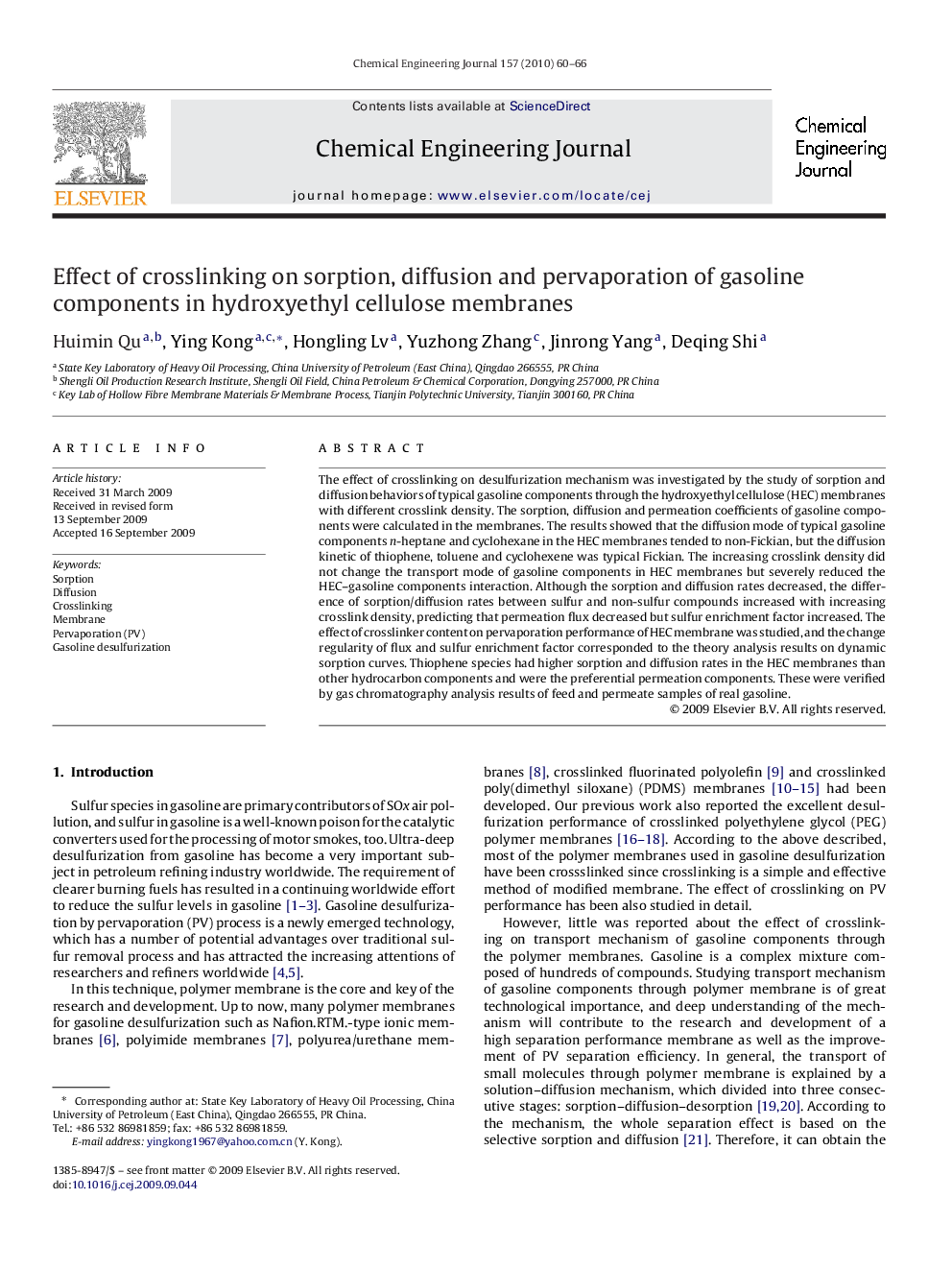| Article ID | Journal | Published Year | Pages | File Type |
|---|---|---|---|---|
| 152685 | Chemical Engineering Journal | 2010 | 7 Pages |
The effect of crosslinking on desulfurization mechanism was investigated by the study of sorption and diffusion behaviors of typical gasoline components through the hydroxyethyl cellulose (HEC) membranes with different crosslink density. The sorption, diffusion and permeation coefficients of gasoline components were calculated in the membranes. The results showed that the diffusion mode of typical gasoline components n-heptane and cyclohexane in the HEC membranes tended to non-Fickian, but the diffusion kinetic of thiophene, toluene and cyclohexene was typical Fickian. The increasing crosslink density did not change the transport mode of gasoline components in HEC membranes but severely reduced the HEC–gasoline components interaction. Although the sorption and diffusion rates decreased, the difference of sorption/diffusion rates between sulfur and non-sulfur compounds increased with increasing crosslink density, predicting that permeation flux decreased but sulfur enrichment factor increased. The effect of crosslinker content on pervaporation performance of HEC membrane was studied, and the change regularity of flux and sulfur enrichment factor corresponded to the theory analysis results on dynamic sorption curves. Thiophene species had higher sorption and diffusion rates in the HEC membranes than other hydrocarbon components and were the preferential permeation components. These were verified by gas chromatography analysis results of feed and permeate samples of real gasoline.
